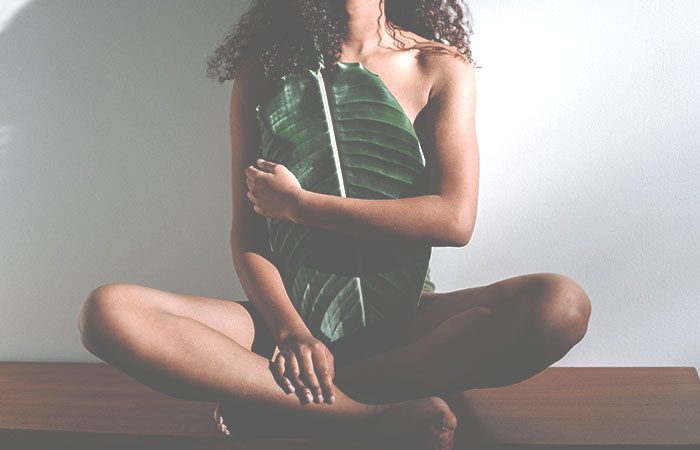I was a non-believer.
Meditation was an abstract concept that worked for others but not for me. “Clearing my mind” seemed impossible. What was I supposed to do with all that inside chatter?
Time and time again, I’d tried to sit down to meditate but couldn’t achieve that “blank page” I thought I was supposed to, and felt completely silly.
Until it was my time.
When I was in college, my mom found her spiritual path. This intrigued me; she had never been religious or had strong faith beliefs, yet she had started an awakening journey through a community that met regularly to practice meditation. She then spent months in India going through enlightenment and abundance experiences.
When she came back, she told me all about it. She continued to incorporate mindfulness, meditation, and gratitude practices into her daily life and tried to pull me into them. I was skeptical. I didn’t fully understand what she was doing. I thought she was wasting her money and her time.
One day, I agreed to go with her to my first group meditation. I sat there in a room full of strangers and felt awkward. Everyone seemed to know what they were doing, but I felt out of place and couldn’t connect. Later on, I tried to meditate on my own but didn’t know where to start or how to do it, so I just stopped trying.
Eventually, my mom also ceased her attempts and told me something I’ll always remember:
“This just isn’t your time, so let’s not force it. You’ll know when you are ready.”
You can’t know it’s your time if you don’t know what it’s time for.
Before I dive into how it was suddenly “my time,” let’s shed some light into what meditation is.
Meditation is a mind and body practice consisting of gazing, visualization, and/or breathing exercises that can lower stress levels, and increase our awareness and focus, while helping us feel calm and at ease. Some studies show that meditation can reduce anxiety symptoms and therefore may be a great tool when navigating and embracing the challenges that anxiety brings us.
There are many types of meditation techniques and exercises, but overall people seek meditation to achieve a happier and healthier self.
They say to “start where you are.”
Years passed after my last attempt at meditating with my mom. I had recently moved to Calgary, Alberta, and was going through my first winter at -40 Celsius. Yes, you read that right. I was depressed, freezing, and working from home, which meant little to no contact with the outside world.
One day my mom, who lives in Spain, asked me if I wanted to be a part of a Spanish version of Deepak Chopra’s “21-day meditation challenge.” As part of this process, she put together a group chat where we would discuss our experience as we went through the challenge. I thought about it. I still didn’t know how to “properly meditate” and I wasn’t a fan of group chats to begin with. But given my low state and the need to put my mind on something other than the next snowfall, I said yes.
It was my time.
The challenge consisted of 21 days of guided mantra meditations accompanied by themed exercises. The goal was to “discover our authentic abundance consciousness,” including how to open up to the abundance the universe has to offer, how to improve our relationship with material and inner wealth, and most importantly, how to unlock the abundance we have within ourselves to live a fulfilling life.
To be honest, I fell asleep during the first few meditations, which is common when starting a meditation practice or when we are feeling way too relaxed. Granted, I did them first thing in the morning when the sun was still not out. I would turn on my UV light, play the sessions, and snooze through them. But then I would focus on the daily activities, which were a wonderful self-exploration endeavor.
After a few days, I got the hang of it and started to notice a few interesting changes. I would wake up looking forward to the next meditation and the activity associated with it. I was engaging with the group chat on daily discussions that made me feel part of a community. I started to acknowledge a powerful energy when repeating the mantras—a sense of mind-body awareness and self-love that I had never felt before.
When the challenge ended, I was so very grateful. I felt I had truly understood my own abundance and had finally crossed that barrier between me and meditation. I can now say meditation changed my life because it helped me embrace my depression without judgment. But I didn’t realize it until I was on the other side.
The worst months of Calgarian winter came after the 21-day challenge. I knew I needed to prioritize myself through self-care practices that aligned with my values if I wanted to remain as physically and mentally healthy as possible. Meditating, journaling, doing yoga, dancing, working out, exploring the outdoors, and spending time with my husband were all a part of it.
I took the time to nurture myself and put in the work. I started meditating more purposefully. I showed up day after day. The more I practiced, the more comfortable I felt. Some days I saw a lot of progress and tapped into new feelings and sensations; others, I felt distracted and restless, triggering sneaky thoughts and emotions. But the more time I put into it, the more transformative it became.
Once I grasped that meditation wasn’t about “clearing my mind” or having a “blank slate” it all started to make sense.
The key is practice and awareness.
Our minds will naturally wander, but by practicing being present with our body sensations, our thoughts, and feelings, we can start to see them, note them, and perhaps even begin to understand them. Then, we can start to be aware and mindful outside of our meditation and in our everyday lives.
If you are new to meditation and don’t know where to start, here are a few tips that can help:
1. Download a meditation app.
I’ve been a Headspace subscriber for almost eight months and I couldn’t recommend it enough. It offers guided meditations, courses, soundscapes, and exercises to help with focus, movement, and sleep. Plus, its interface is intuitive and user-friendly
Calm is another highly recommended option, which features meditation programs, breathing exercises, masterclasses, relaxation music, and more. It provides free content, including a “7 Days of Calm” meditation series, and a selection of Sleep Stories.
Insight Timer offers 55,000 free guided meditations, music tracks, ambient sounds, talks led by mindfulness experts, and a popular meditation timer for unguided practices.
The benefit of a meditation app is that it provides various tools and direction to kickstart your practice while boosting your motivation and accountability. There are tons out there. Even YouTube can be a great resource.
2. Set up a meditation space.
Whether it’s a comfy chair, your favorite spot on the couch, or a floor pillow or mat, find a comfortable and quiet space where you can sit down with your back straight and remain still for a while. This is just to get you started. At some point, you’ll feel empowered to meditate anywhere.
I like sitting on a fluffy floor pillow in front of my window, especially if I’m meditating first thing in the morning, so I can get some most needed sunshine and listen to the city sounds. When I’m outside in nature, I like to sit by the river or near the mountains.
3. Choose your preferred length and timing.
Start with three- to five-minute sessions and see how it goes. Then switch to 10 to 15 minutes or longer. The more you practice, the more comfortable you will feel about sitting still and meditating for long periods of time.
Try meditating during different times of the day as well: First thing in the morning, in the middle of the day like during a work break, or in the evening. Find the length and timing that works for you depending on your preference and how you are feeling.
I find that a short five- to 10-minute session in the morning is just right to start my day more mindfully. And then a 10-minute unwind session in the evening helps me prepare my mind and body for a good night’s sleep.
4. Add scent.
Lighting your favorite incense, candle, or diffusing a calming essential oil can be a great addition to your meditation practice, as it will stimulate your senses and help you feel more grounded. My favorite essential oils to meditate are lavender and lotus.
5. Keep Practicing.
Even if you’ve been at it for a while, keep practicing. Note that there is no such thing as a bad meditation, it is a fine skill that transforms and gets more powerful over time. Plus, as human beings, we change and evolve and so will our practice, tapping into different parts of ourselves that we may have not discovered just yet.
That’s it!
Meditation can change our lives in many ways. Personally, it helped me smooth the edges of my path into mindfulness, self-discovery, and much-needed love.
How has meditation changed your life? I would love to hear your story. And if you haven’t tried it, I hope this inspires you to go on this magical journey!
~









Read 10 comments and reply